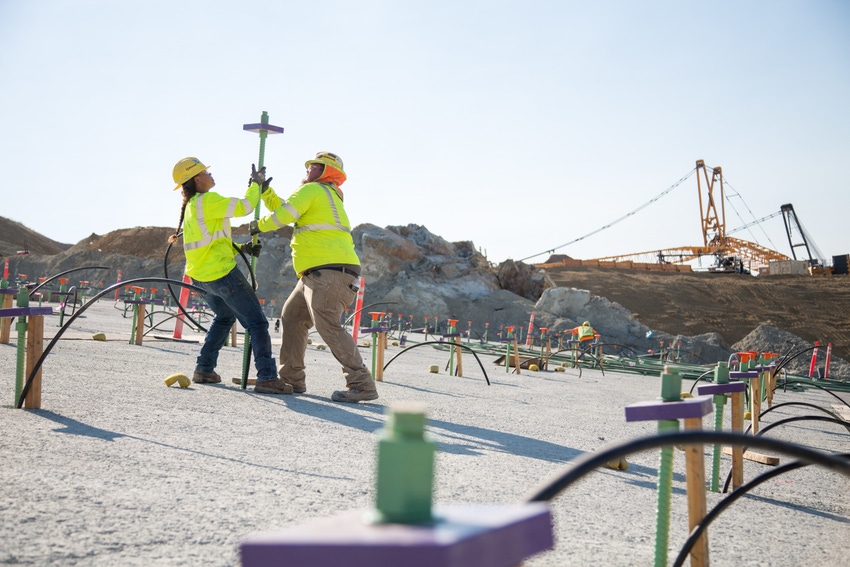
The California congressman whose district includes the area round the Oroville Dam is voicing concerns that the cost of a dam reconstruction project now in its second year is now projected at $1.1 billion.
That’s up from the $870 million projected in January, and way above the state Department of Water Resources initial cost estimate for repairs of $200 million, says Rep. Doug LaMalfa, a Republican rice farmer from nearby Richvale.
“The newest estimate of over $1 billion is many times more than original estimates initially released to the public,” he says. “I’m glad to see high-quality new construction being built to replace the failed infrastructure, but the rising costs are troubling.”
DWR officials say the updated estimate reflects additional excavation on the emergency spillway hillside to reach competent rock, additional material for construction of the splashpad, and additional crews and equipment necessary to meet a Nov. 1 construction deadline. It also reflects additional staff time, technical consultants and interagency support, and an estimate for site restoration that will occur after construction of the spillways is complete, the agency explains in a news release.
COSTS ADDING UP
In addition to the $160 million price tag for emergency response efforts that ended in May 2017, the DWR now expects the dam recovery project to total $940 million. That includes $630 million for main and emergency spillways work and $310 million for related work, including debris and sediment removal, powerline replacement, developing access roads, and staff and consultants’ work, officials say.
These costs could be only the beginning, however. DWR spokeswoman Erin Mellon has told reporters that the estimate could go higher, as costs are affected by conditions at the site and direction from regulatory bodies during the course of the project.
But the biggest cost could be legal claims from affected residents and businesses that seek billions of dollars in damages allegedly caused by the DWR’s mismanagement of the dam, the Los Angeles Times reports. Those include one suit by 42 affected individuals, businesses, and farms, another representing the city of Oroville, and a third seeking class action status, according to the newspaper.
The DWR wants the Federal Emergency Management Agency to cover 75 percent of the cost of construction, with the rest coming from State Water Project contractors. But so far the federal government has only approved reimbursement of $87.4 million of the $116.5 million submitted by DWR — a number that’s unchanged from earlier in the year.
FEMA QUESTIONS
LaMalfa and Rep. John Garamendi, D-Calif., said this spring that FEMA officials told them an unfavorable independent review of the DWR’s management of the dam may jeopardize federal reimbursement for the dam’s reconstruction.
A forensic team commissioned to study the dam’s near-failure issued a 584-page report in January that largely blames a culture of complacency within the DWR that insulated the agency from access to industry knowledge and technical expertise to safeguard the dam and its mile-long spillway.
FEMA has noted that in past disasters where there was a “lack of maintenance,” they only had the legal authority to provide reimbursements for work to bring facilities back to their “pre-disaster design,” the two lawmakers explained. In Oroville’s case, that would merely “return the spillways to the same condition that played a role in causing the disaster in the first place,” LaMalfa contends.
Aside from the rising cost of repairs, it is “equally concerning” that state officials assume the federal government will “foot the bill” after the forensic team concluded that poor maintenance and inspections were at least partly to blame for the dam’s near-failure in February 2017, he argues. “The price tag of this project only continues to rise, and we must ensure the rebuilt spillways will increase safety and functionality of the lake for nearby residents. Preventing another failure is paramount.”
Mellon told Western Farm Press in May that “DWR will continue to submit reimbursements to FEMA until they provide direction otherwise.” She recently acknowledged to reporters that the process could be lengthy.
REPAIRS PROCEEDING
Lake Oroville is the chief reservoir for the State Water Project, whose contractors irrigate about 750,000 acres of Central Valley farmland and serve more than 26 million customers, according to the project’s website.
The dam’s near-failure threatened a significant portion of the region’s roughly $1.5 billion agriculture industry, including several major processors that would have been in the path of flood waters had the dam collapsed.
Crews are working to complete placement of all concrete on the main spillway by Nov. 1 to avoid setbacks because of winter storms. Dry finishing, concrete curing, joint sealing, completing sidewall backfill, and site cleanup on the main spillway will continue after Nov. 1, officials say.
On the emergency spillway, placement of roller-compacted concrete on the southern half of the splashpad was 72 percent complete as of early September, the DWR reported. A buttress at the base of the spillway will be built later this year, as work on the emergency spillway will continue after Nov. 1.
About the Author(s)
You May Also Like






